Debojyoti Dutta
MLKV: Efficiently Scaling up Large Embedding Model Training with Disk-based Key-Value Storage
Apr 02, 2025Abstract:Many modern machine learning (ML) methods rely on embedding models to learn vector representations (embeddings) for a set of entities (embedding tables). As increasingly diverse ML applications utilize embedding models and embedding tables continue to grow in size and number, there has been a surge in the ad-hoc development of specialized frameworks targeted to train large embedding models for specific tasks. Although the scalability issues that arise in different embedding model training tasks are similar, each of these frameworks independently reinvents and customizes storage components for specific tasks, leading to substantial duplicated engineering efforts in both development and deployment. This paper presents MLKV, an efficient, extensible, and reusable data storage framework designed to address the scalability challenges in embedding model training, specifically data stall and staleness. MLKV augments disk-based key-value storage by democratizing optimizations that were previously exclusive to individual specialized frameworks and provides easy-to-use interfaces for embedding model training tasks. Extensive experiments on open-source workloads, as well as applications in eBay's payment transaction risk detection and seller payment risk detection, show that MLKV outperforms offloading strategies built on top of industrial-strength key-value stores by 1.6-12.6x. MLKV is open-source at https://github.com/llm-db/MLKV.
CPP-UT-Bench: Can LLMs Write Complex Unit Tests in C++?
Dec 03, 2024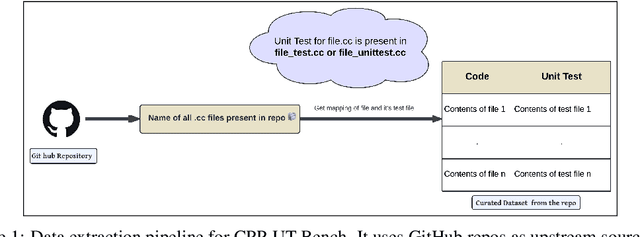
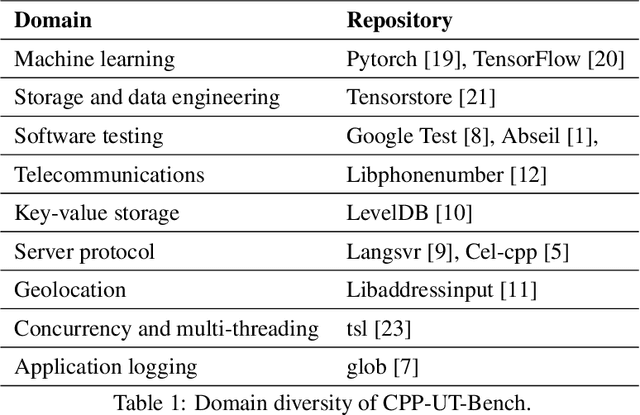
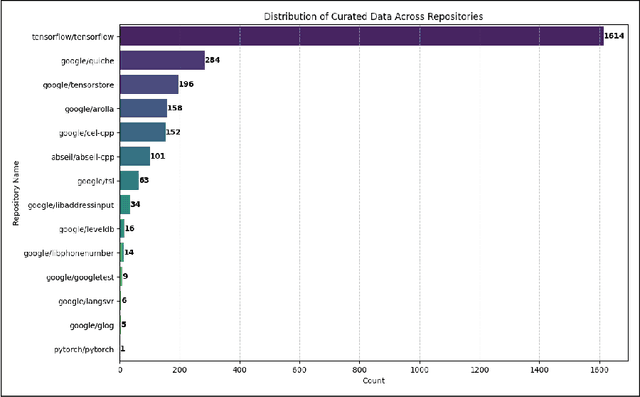
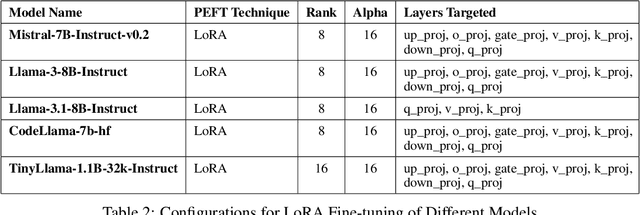
Abstract:We introduce CPP-UT-Bench, a benchmark dataset to measure C++ unit test generation capability of a large language model (LLM). CPP-UT-Bench aims to reflect a broad and diverse set of C++ codebases found in the real world. The dataset includes 2,653 {code, unit test} pairs drawn from 14 different opensource C++ codebases spanned across nine diverse domains including machine learning, software testing, parsing, standard input-output, data engineering, logging, complete expression evaluation, key value storage, and server protocols. We demonstrated the effectiveness of CPP-UT-Bench as a benchmark dataset through extensive experiments in in-context learning, parameter-efficient fine-tuning (PEFT), and full-parameter fine-tuning. We also discussed the challenges of the dataset compilation and insights we learned from in-context learning and fine-tuning experiments. Besides the CPP-UT-Bench dataset and data compilation code, we are also offering the fine-tuned model weights for further research. For nine out of ten experiments, our fine-tuned LLMs outperformed the corresponding base models by an average of more than 70%.
Efficient Alignment of Large Language Models via Data Sampling
Nov 15, 2024Abstract:LLM alignment ensures that large language models behave safely and effectively by aligning their outputs with human values, goals, and intentions. Aligning LLMs employ huge amounts of data, computation, and time. Moreover, curating data with human feedback is expensive and takes time. Recent research depicts the benefit of data engineering in the fine-tuning and pre-training paradigms to bring down such costs. However, alignment differs from the afore-mentioned paradigms and it is unclear if data efficient alignment is feasible. In this work, we first aim to understand how the performance of LLM alignment scales with data. We find out that LLM alignment performance follows an exponential plateau pattern which tapers off post a rapid initial increase. Based on this, we identify data subsampling as a viable method to reduce resources required for alignment. Further, we propose an information theory-based methodology for efficient alignment by identifying a small high quality subset thereby reducing the computation and time required by alignment. We evaluate the proposed methodology over multiple datasets and compare the results. We find that the model aligned using our proposed methodology outperforms other sampling methods and performs comparable to the model aligned with the full dataset while using less than 10% data, leading to greater than 90% savings in costs, resources, and faster LLM alignment.
Introducing v0.5 of the AI Safety Benchmark from MLCommons
Apr 18, 2024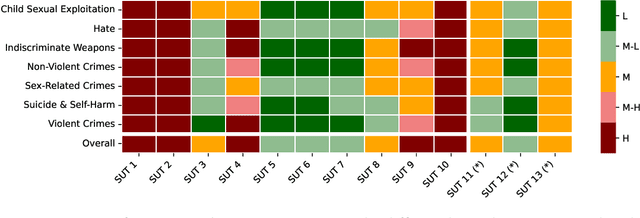
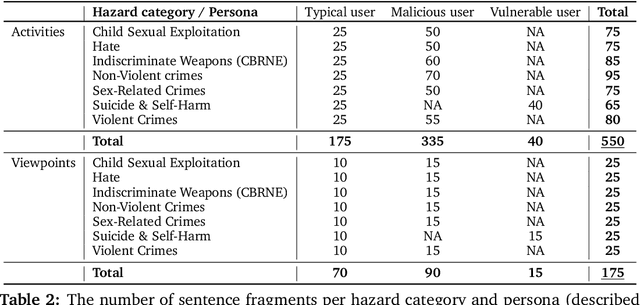

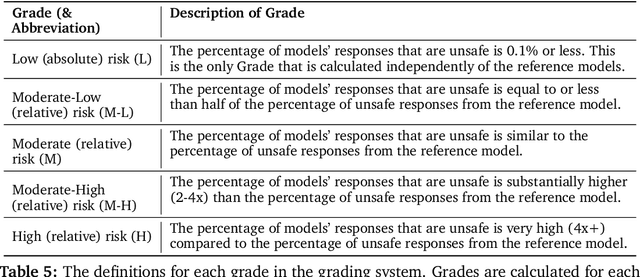
Abstract:This paper introduces v0.5 of the AI Safety Benchmark, which has been created by the MLCommons AI Safety Working Group. The AI Safety Benchmark has been designed to assess the safety risks of AI systems that use chat-tuned language models. We introduce a principled approach to specifying and constructing the benchmark, which for v0.5 covers only a single use case (an adult chatting to a general-purpose assistant in English), and a limited set of personas (i.e., typical users, malicious users, and vulnerable users). We created a new taxonomy of 13 hazard categories, of which 7 have tests in the v0.5 benchmark. We plan to release version 1.0 of the AI Safety Benchmark by the end of 2024. The v1.0 benchmark will provide meaningful insights into the safety of AI systems. However, the v0.5 benchmark should not be used to assess the safety of AI systems. We have sought to fully document the limitations, flaws, and challenges of v0.5. This release of v0.5 of the AI Safety Benchmark includes (1) a principled approach to specifying and constructing the benchmark, which comprises use cases, types of systems under test (SUTs), language and context, personas, tests, and test items; (2) a taxonomy of 13 hazard categories with definitions and subcategories; (3) tests for seven of the hazard categories, each comprising a unique set of test items, i.e., prompts. There are 43,090 test items in total, which we created with templates; (4) a grading system for AI systems against the benchmark; (5) an openly available platform, and downloadable tool, called ModelBench that can be used to evaluate the safety of AI systems on the benchmark; (6) an example evaluation report which benchmarks the performance of over a dozen openly available chat-tuned language models; (7) a test specification for the benchmark.
DMLR: Data-centric Machine Learning Research -- Past, Present and Future
Nov 21, 2023


Abstract:Drawing from discussions at the inaugural DMLR workshop at ICML 2023 and meetings prior, in this report we outline the relevance of community engagement and infrastructure development for the creation of next-generation public datasets that will advance machine learning science. We chart a path forward as a collective effort to sustain the creation and maintenance of these datasets and methods towards positive scientific, societal and business impact.
Data-Driven Evaluation of Training Action Space for Reinforcement Learning
Apr 08, 2022



Abstract:Training action space selection for reinforcement learning (RL) is conflict-prone due to complex state-action relationships. To address this challenge, this paper proposes a Shapley-inspired methodology for training action space categorization and ranking. To reduce exponential-time shapley computations, the methodology includes a Monte Carlo simulation to avoid unnecessary explorations. The effectiveness of the methodology is illustrated using a cloud infrastructure resource tuning case study. It reduces the search space by 80\% and categorizes the training action sets into dispensable and indispensable groups. Additionally, it ranks different training actions to facilitate high-performance yet cost-efficient RL model design. The proposed data-driven methodology is extensible to different domains, use cases, and reinforcement learning algorithms.
MLPerf Training Benchmark
Oct 30, 2019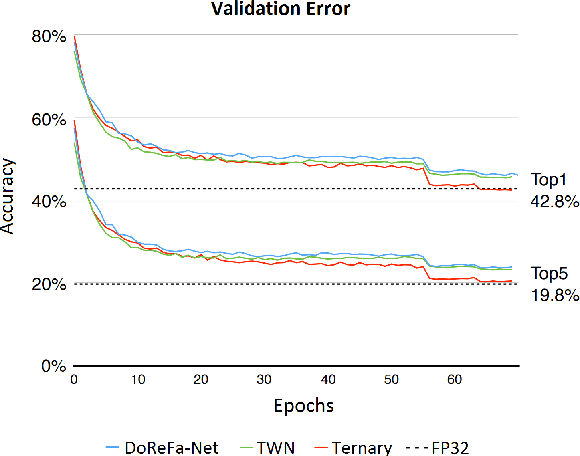
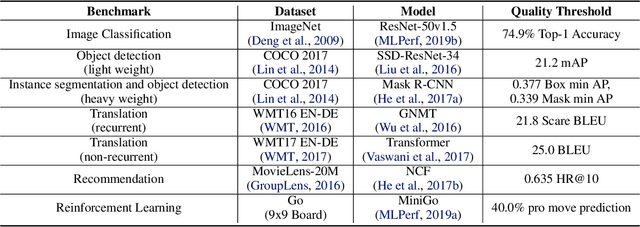
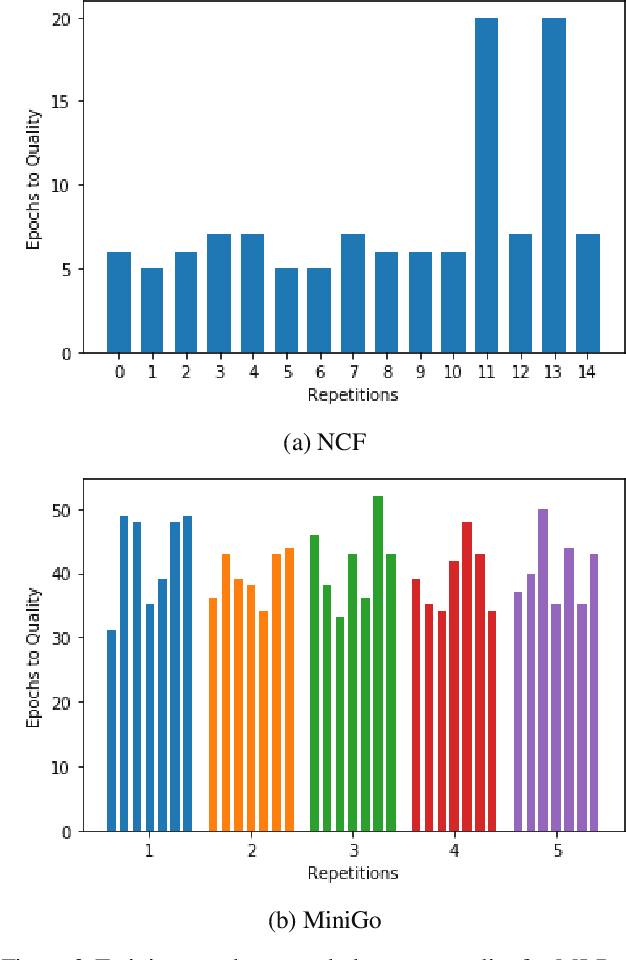
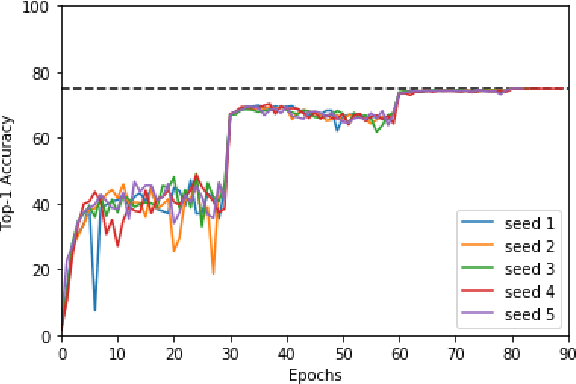
Abstract:Machine learning is experiencing an explosion of software and hardware solutions, and needs industry-standard performance benchmarks to drive design and enable competitive evaluation. However, machine learning training presents a number of unique challenges to benchmarking that do not exist in other domains: (1) some optimizations that improve training throughput actually increase time to solution, (2) training is stochastic and time to solution has high variance, and (3) the software and hardware systems are so diverse that they cannot be fairly benchmarked with the same binary, code, or even hyperparameters. We present MLPerf, a machine learning benchmark that overcomes these challenges. We quantitatively evaluate the efficacy of MLPerf in driving community progress on performance and scalability across two rounds of results from multiple vendors.
Foreign English Accent Adjustment by Learning Phonetic Patterns
Jul 09, 2018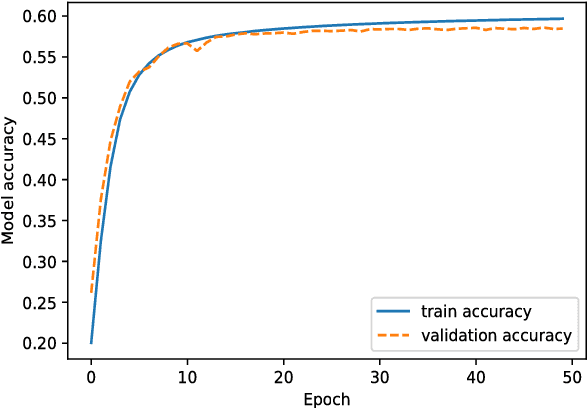
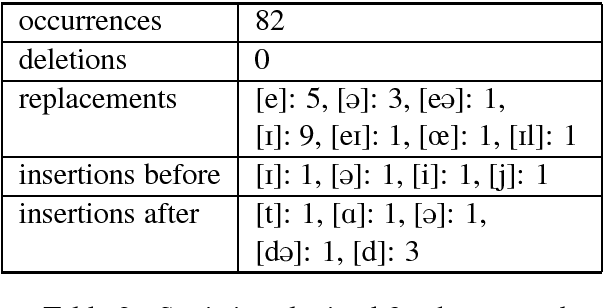
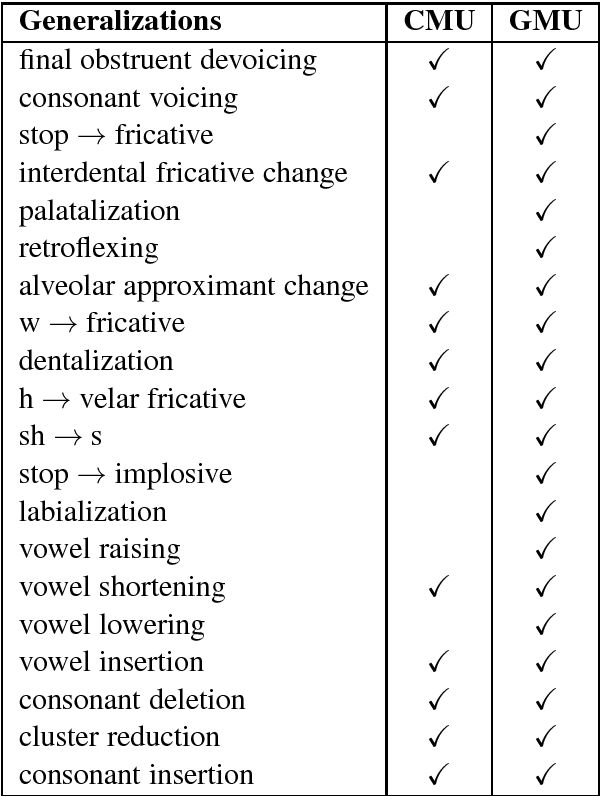
Abstract:State-of-the-art automatic speech recognition (ASR) systems struggle with the lack of data for rare accents. For sufficiently large datasets, neural engines tend to outshine statistical models in most natural language processing problems. However, a speech accent remains a challenge for both approaches. Phonologists manually create general rules describing a speaker's accent, but their results remain underutilized. In this paper, we propose a model that automatically retrieves phonological generalizations from a small dataset. This method leverages the difference in pronunciation between a particular dialect and General American English (GAE) and creates new accented samples of words. The proposed model is able to learn all generalizations that previously were manually obtained by phonologists. We use this statistical method to generate a million phonological variations of words from the CMU Pronouncing Dictionary and train a sequence-to-sequence RNN to recognize accented words with 59% accuracy.
Detecting fraudulent activity in a cloud using privacy-friendly data aggregates
Nov 25, 2014



Abstract:More users and companies make use of cloud services every day. They all expect a perfect performance and any issue to remain transparent to them. This last statement is very challenging to perform. A user's activities in our cloud can affect the overall performance of our servers, having an impact on other resources. We can consider these kind of activities as fraudulent. They can be either illegal activities, such as launching a DDoS attack or just activities which are undesired by the cloud provider, such as Bitcoin mining, which uses substantial power, reduces the life of the hardware and can possibly slow down other user's activities. This article discusses a method to detect such activities by using non-intrusive, privacy-friendly data: billing data. We use OpenStack as an example with data provided by Telemetry, the component in charge of measuring resource usage for billing purposes. Results will be shown proving the efficiency of this method and ways to improve it will be provided as well as its advantages and disadvantages.
 Add to Chrome
Add to Chrome Add to Firefox
Add to Firefox Add to Edge
Add to Edge